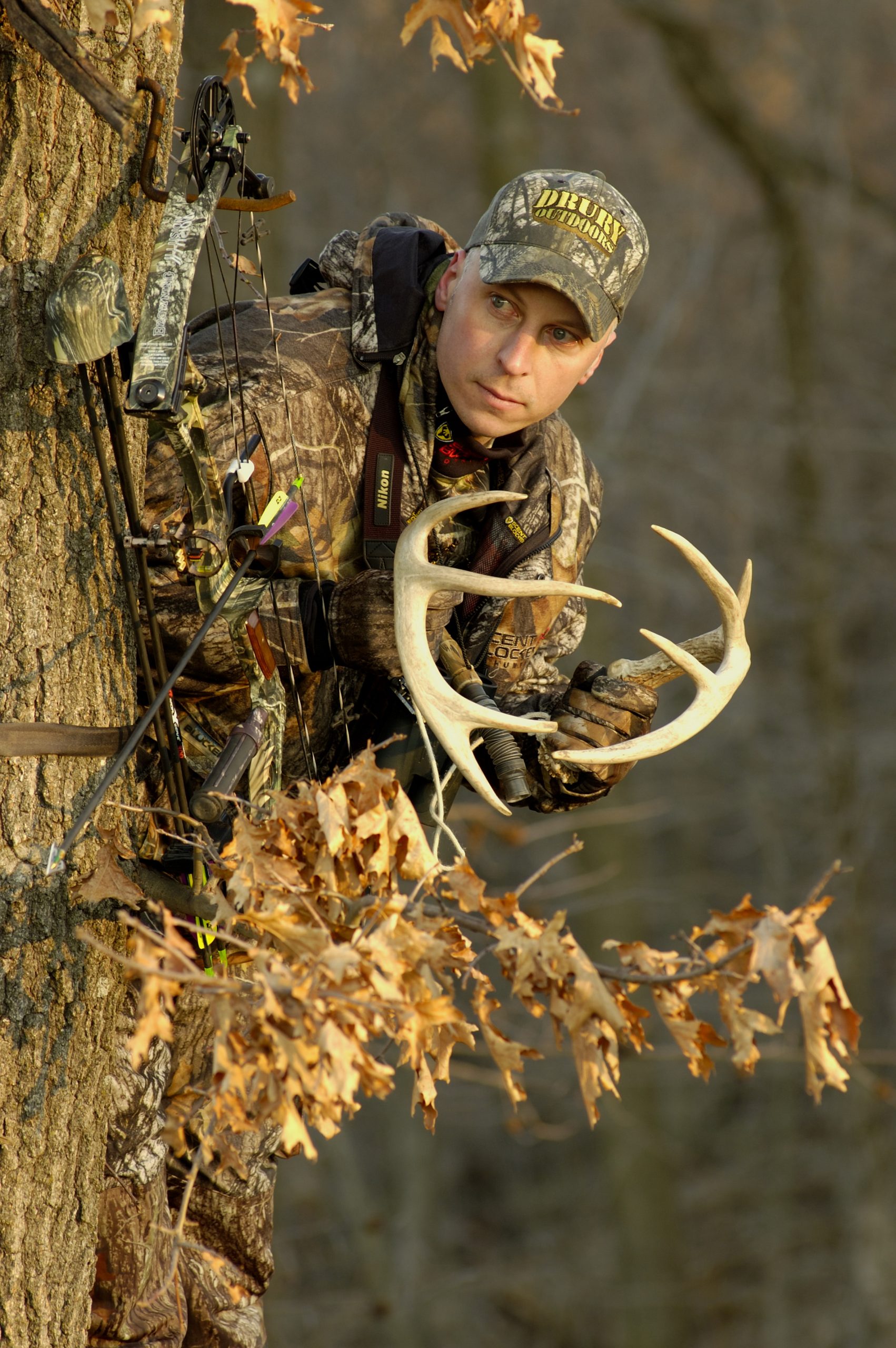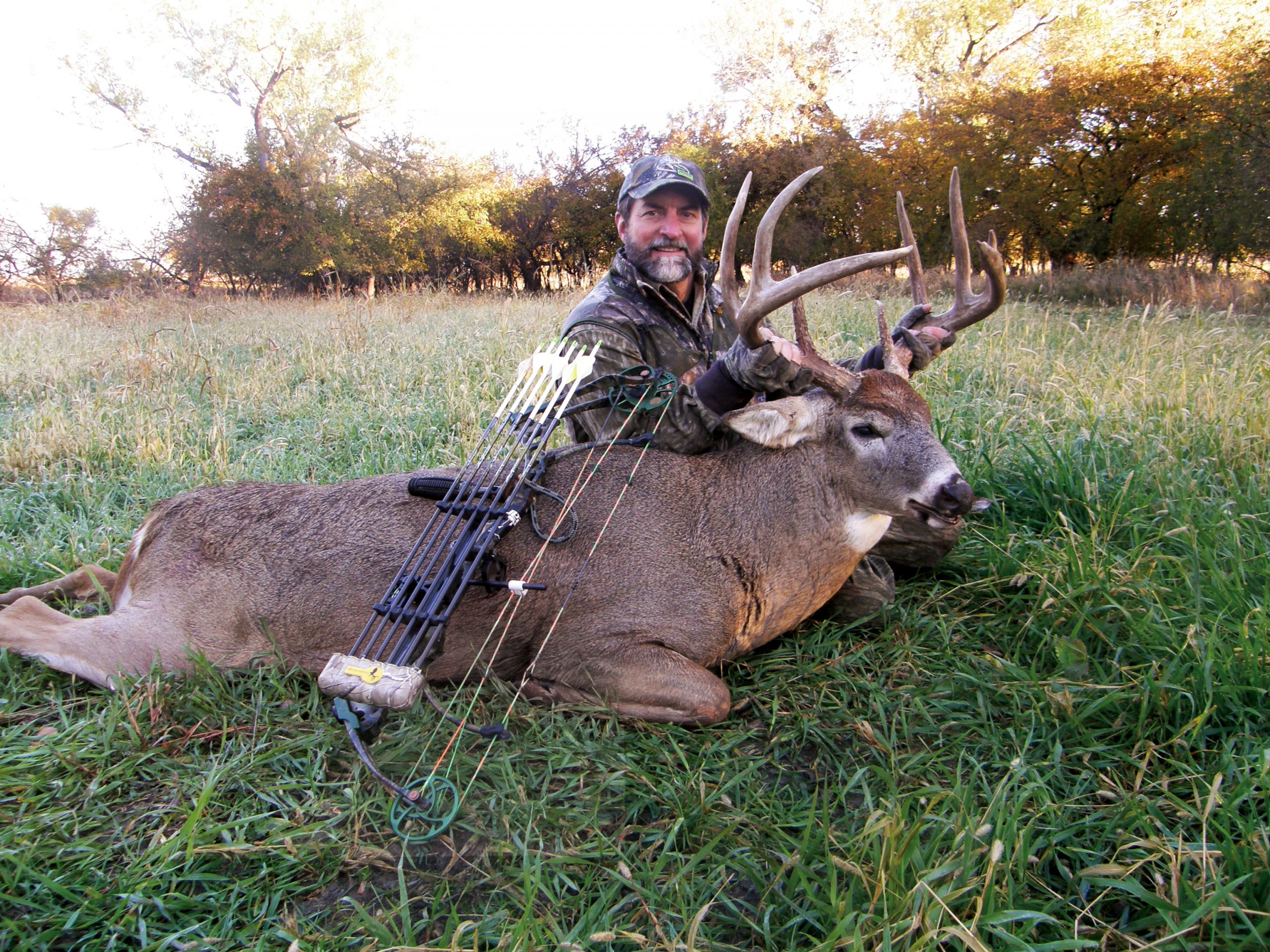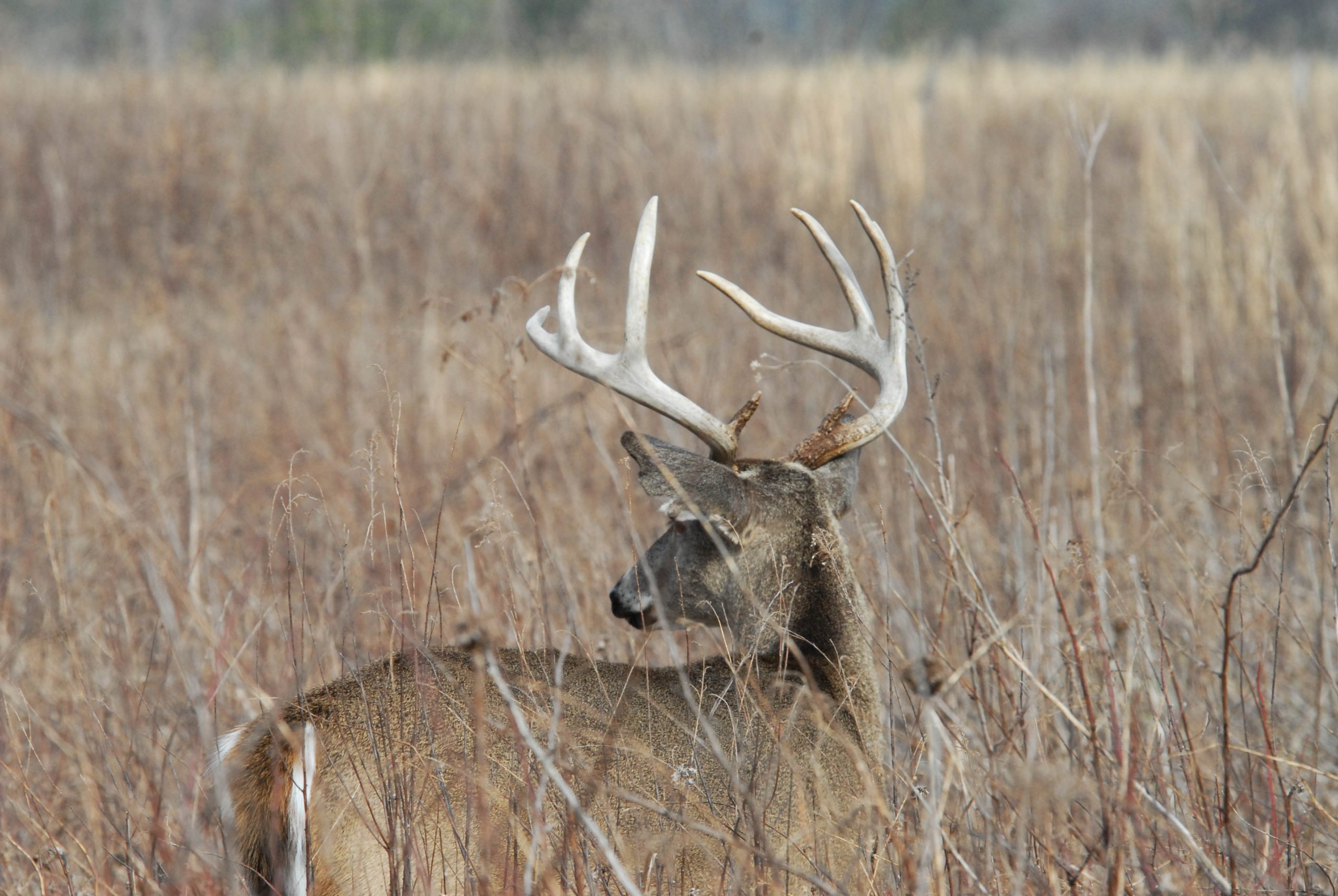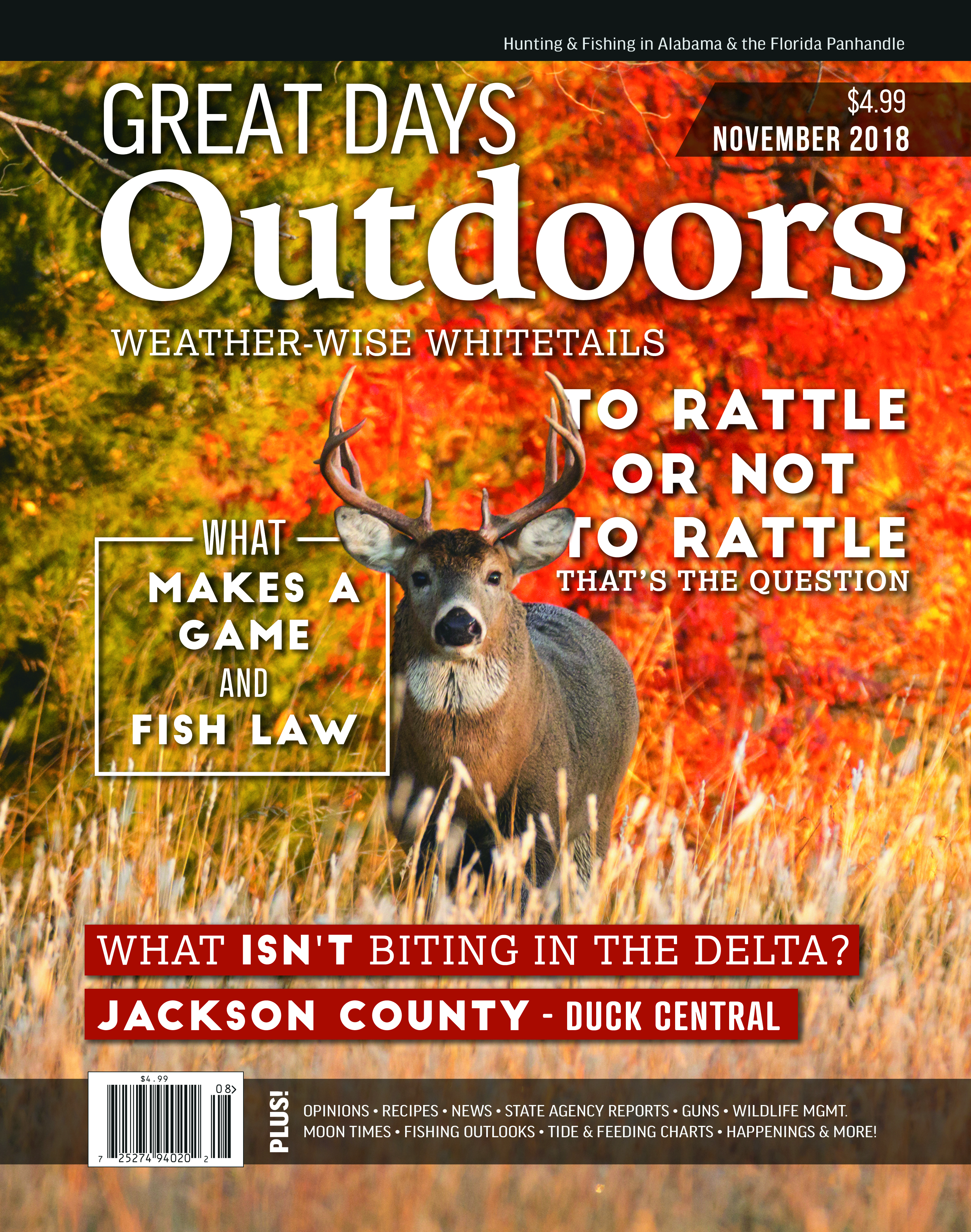One of the most effective deer calls to lure big bucks within bow or gun range, in Texas and the Midwestern states, is rattling antlers. Because of the vast amount of open land, the deer there can hear you from a long way off, and you can see them coming. Although the south doesn’t have that same type of terrain, I’m totally convinced that rattling does work in the the Southern States and I’m going to tell you how to rattle in a buck, even if we may call in the types of bucks we never see.

Most Southerners believe rattling won’t work in their state, but it will.
Rattling Doesn’t Work Sometimes
No one tactic works each time you use it on every deer. Hunters will find older-age-class bucks highly-educated about people, since these very-complex animals that only occasionally do something stupid. Older bucks have proved they have the ability to learn quickly to survive. If a buck comes into an area where he hears a buck fight and sees no action where he thinks he should, then the next time he hears antlers clash, he’ll circle downwind of the rattling. Deer depend on their noses, not their eyes, to tell them where the fight’s happening, what animals are doing the fighting, and whether or not an estrous doe is watching the fight. Remember that the South has ruts occurring from late November – February each season.
Perhaps a buck:
* Is tending an estrous doe. When this happens, a mature buck isn’t interested in having a fight with other bucks or even watching other bucks fight, because he’s focused on keeping other bucks away from his doe and her away from the other bucks. If at all possible, he’ll try to herd his estrous doe away from a buck fight. When the dominant buck with an estrous doe hears rattling, he’s probably thinking, “Those young bucks are beating each other’s brains out, and I have the hot honey right here. I just hope they don’t hear, see or smell us.” Then that sly, older buck will slip away from the fight with his doe.
* Has just fought. A dominant buck can whip any other buck in his home range any day those bucks want to fight. But he can’t whip every buck in his territory each day. If a big buck just has finished a major fight in the last day or two, he’ll certainly not want to fight again. If this buck hears rattling antlers, he’ll avoid the confrontation.
* Has no need to fight. Dominant, older-age bucks don’t care about a subordinate-buck fight. Small bucks may run in to see young bucks fight, but older bucks have better things to do with their time. Although some big bucks may come to antlers clashing, they’ll usually circle downwind and test the wind with their noses to determine which young bucks are fighting and the deer at the fight scene. Older bucks have learned to rely more on their sense of smell to tell them what’s happening in the woods. The buck’s eyes primarily serve to confirm what his ears and nose already have told him.

Everything – even buck deer – enjoy observing a fight.
* Isn’t in the mood for conflict or socializing. I always think of mature bucks as grumpy old men who enjoy their own company and choose solitude as a way of life for most of the hunting season. They really don’t enjoy the company of does – except during the breeding season. They don’t want to seek out other bucks involved in some sort of conflict. Instead, they’ll deliberately avoid any area where they hear rattling and/or grunting. If you’ve hunted mature bucks, you’ll notice that they often have their own private trails to and from feeding and bedding sites. They purposefully choose not to even walk the same trails that other deer walk.
* Won’t leave his cover. Many older-age-class bucks won’t leave their bedding areas during hunting season in daylight hours regardless of what they see or hear just outside that portion of land. To survive, these wise, old bucks know they must stay put at certain times of the year – especially when they see humans in the woods. As long as the bucks remain in their cover – often a thicket, a small patch of woods in the center of an open field or high grasses beside a major road – they know that more than likely no hunters will harm them. Wise bucks will move outside their sanctuaries only after dark.

Older-age-class bucks generally will circle downwind before coming to any type of calling.
* Doesn’t see what he hears. If an older buck hears rattling antlers, he also expects to see a buck fight. Deer can see from great distances through the woods. If a buck goes out into open woods where he hears antlers rattling and doesn’t spot other deer, he probably won’t come in close enough for you to see him.
* Is in a location where bucks don’t fight. Remember that when you’re hunting, you’re in a buck’s living room. He knows all the other deer that live there, and where they do the things deer do. Hunters have found that the most sparring takes place where they see the most bucks. The least amount of sparring happens in or around a buck’s cover areas – except during the rut when a fight can take place anywhere.
* Realizes your deer rattle lacks other elements. When bucks fight, they often grunt, break tree limbs, hit brush and make other sounds related to a fight. A wise buck may not come in if he hears a fight not consistent with all the sounds he associates with a real buck battle.
Rattling Can Work
* One Solution – Rattling with a Buddy – “Where in the world did you get that big, ole buck?” I asked a gentleman who brought in a huge 12-point buck from Choctaw County, Ala., into my taxidermy shop back when I was doing taxidermy in the 1970s. The hunter told me, “Well, we rattled him up.”
I’d never heard an Alabama hunter say he’d taken a buck by rattling him. Many places in south Alabama are so thick that a rattlesnake couldn’t crawl through them. I knew that rattling antlers there seldom if ever worked. So, I asked, “How in the world did you ever rattle him in to you?”

One of the big advantages to buddy-hunting bucks is the shooter who sets-up 50-100 yards behind the caller often will see and take the buck the caller never sees.
“I didn’t rattle him in, but my hunting buddy rattled him for me,” the hunter with the buck explained.
Now I was really interested. “Okay, really, how did y’all rattle in this buck?”
The man smiled and answered, “Rattling is a very effective way to call in bucks. In Alabama, when most people call in a buck by rattling, they never see those bucks and think the tactic doesn’t work.
“I studied about how deer came to a call – a grunt, a bleat or any kind of call. I noticed that most bucks responding to a deer call generally were young bucks or does. However, I also learned that big bucks would come to a deer call, but usually circled downwind of the call, out of sight, where they could smell the two bucks fighting upwind. Often they’d smell the hunter too and sneak off without ever being seen or heard.
“When I talked with my friend about this problem, we decided to buddy hunt and rattle. The person rattling would set-up in a tree stand 50-100 yards ahead of the hunter who’d be shooting. The shooter also would be in a tree stand and be looking to his left and to his right to spot the buck coming, while he circled the hunter who was rattling. We soon realized that this technique was extremely effective for calling in and taking older-age-class bucks.

Often when a buck comes in, all his attention is focused on the rattling he hears when he circles the caller, which gives the shooter a broadside shot.
“This buck I took this weekend came in from my left about 50 yards behind my buddy, who was rattling. The 12-pointer was walking slowly and stopping to listen and test the air for smells. When he moved into a clearing, I had an easy, broadside shot.
“Most Alabama hunters hunt by themselves. However, my buddy and I have learned that by team hunting and taking turns being the shooter, we both can harvest more and bigger bucks each season. This buck is the best one we’ve taken so far.”
Will Primos on the Effectiveness of Rattling in the Early Season
Will Primos, founder, and creator of Primos Hunting, studies each season how to best call in deer and says, “I’ve always believed that light grunting and gently tickling antlers together is the best way to lure bucks in the early season. Sometimes with your calling, you just simply have to make contact with the buck. If you catch him in a social mood, he’ll come toward you.

Will Primos, pictured here, has rattled and taken buck deer in the South, even in the early season.
“Although most deer-calling experts believe hunters should reserve the method of crashing antlers and giving loud, aggressive grunts for the rut, several seasons ago, while filming a video about deer hunting, I taped an episode that many early-season deer hunters would find hard to believe. We were sitting in our tree stands when two, 120-class bucks got into a full-blown, deadly battle. The deer weren’t simply sparring but were crashing antlers and trying to hurt one another, just like the buck battles I’d seen during the rut.
“Once bucks are in hard antler, they’re ready to breed and waiting to find a doe in estrus. I’m convinced that lightly tinkling antlers and using soft grunting provides the best technique to decoy bucks into bow range during the early season. However, if this tactic doesn’t work, if the wind blows, or if I find the woods filled with noise, I’ll crash the antlers together to sound like a full-blown buck battle and grunt aggressively like two deer fighting. If deer can’t hear your calls, they won’t come to them. I suggest that on windy days when you’re in quiet woods after you’ve called softly, then simulate a buck battle, and increase the volume of your calling and rattling for the most success.”

Will Primos believes that bucks start fighting as soon as their antlers come out of the velvet.
So, when you’re seeing no deer, try rattling. Do I carry rattling antlers and a rattling bag with me when I hunt – definitely yes.
Sidebar: Tips for Rattling With Thomas Neuberger
Thomas Neuberger is a professional deer hunter who says, “Although I live in Texas where rattling works great, I’ve used rattling to call in deer all over the country.”
Why Use Scent Eliminators
“To decrease the odds of spooking the deer I’m trying to take, I use scent-elimination products on my body, to wash my clothes and to spray on my clothing. I also like a spray with earth odor to use in my stand, since when bucks are fighting, their hooves will tear-up the earth.”

Many Southern hunters who try rattling have called bucks in, but when the deer have circled downwind, they don’t see them.
Why Have Back Cover
Neuberger depends on his camouflage clothing to keep the deer that come straight in from spotting him. “I want to have bushes, trees or grass behind me, so I’m not silhouetted, and the deer can’t see me when I move. I also try and set-up where I can see in front of me, to my left and to my right and downwind of my stand. Although some bucks will come charging straight at you when you’re rattling antlers, most of the time the bucks will circle you before they come in to where you are, probably to attempt to catch the odor of the two fighting bucks you’re imitating.”
Where to Set-Up to Rattle
In the East, Neuberger looks for a big briar thicket or a clear-cut on the edge of a pasture and sets-up on the opposite side of the pasture from the thicket. “If a buck’s holding in that thicket, he must cross that pasture or field to come to me, which will give me a shot in the opening.”

One of the best ways to take a big buck is to have his attention focused on the rattling antlers coming from upwind of him, while he’s using his nose to try to determine which bucks in the area are fighting.
What Rattling Sequence to Use
Neuberger likes a combination of a rattling bag and a grunt call. “I’ll start my rattling sequence by rattling the bag very lightly to sound like deer just beginning to spar. If a buck doesn’t come in, I’ll rattle the bag harder, stomp the ground with my knees, break limbs and rustle the leaves to sound like two bucks actually moving as they’re fighting. Then I’ll grunt too.”
How Long to Rattle
Neuberger rattles much longer than most people. “I also change the intensity of my rattling. I usually rattle and grunt continuously for 15 to 30 minutes, changing from very-aggressive, loud rattling to very-soft rattling where I just tinkle the antlers. If a deer doesn’t come in within 15 to 20 minutes, I’ll move to a new location. I rattle as a hit-and-run tactic to cover plenty of ground.”
For more deer hunting tips, check out John E. Phillips’ books The Masters’ Secrets of Deer Hunting: Hunting Tactics and Scientific Research Book 1 and How to Hunt Deer Like a Pro, along with others, available on Kindle, print and Audible.
This article first appeared in the November 2018 print issue of Great Days Outdoors Magazine. For more great hunting and fishing content for the deep South, subscribe to Great Days Outdoors print and digital editions or click the image to download this issue.

